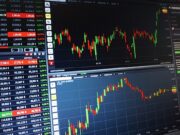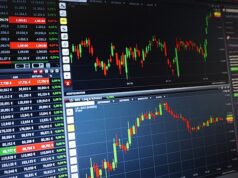- Impact on Borrowing and Debt Management
Increased Cost of Mortgages, Auto Loans, and Credit Cards
In 2025, rising interest rates are making borrowing more expensive, affecting mortgages, auto loans, and credit cards. Higher interest rates lead to increased monthly payments, making it harder for individuals to afford large purchases. Many prospective homebuyers are reconsidering their decisions due to the added financial burden. Similarly, credit card debt has become more costly, prompting consumers to seek alternatives for managing expenses.
Strategies to Manage Existing Debt in a High-Rate Environment
To navigate this high-interest environment, borrowers are adopting strategic debt management techniques. One effective approach is prioritizing the repayment of high-interest loans first, a method known as the debt avalanche strategy. Additionally, refinancing options, though limited, are being explored by those seeking lower fixed rates before they rise further. Budgeting and expense tracking have also become essential for maintaining financial stability.
Shift Towards Fixed-Rate Loans vs. Variable-Rate Options
A crucial decision for borrowers is choosing between fixed-rate and variable-rate loans. Fixed-rate loans offer predictable payments, making them a safer choice in an uncertain economic climate. In contrast, variable-rate loans may seem attractive initially but carry the risk of increased payments over time. Understanding market trends and seeking expert guidance is vital for making informed financial choices, as emphasized by economic analysts.
- Changes in Saving and Investment Approaches
Higher Returns on Savings Accounts and Fixed Deposits
With interest rates rising in 2025, savings accounts and fixed deposits are offering better returns. This has encouraged individuals to shift more funds into these low-risk options, ensuring steady growth without market volatility. Many people are opting for fixed deposits as they provide guaranteed interest earnings, making them a safer alternative to riskier investments.
Adjustments in Investment Portfolios (Bonds vs. Stocks)
Investors are adjusting their portfolios to balance risk and return. With higher interest rates, bonds have become more attractive, as they now provide better yields. At the same time, stock markets are experiencing volatility, pushing risk-averse investors toward stable assets. Diversification has become a key strategy, with many seeking a mix of fixed-income securities and equities to maintain long-term growth. Understanding the risks associated with different asset classes is crucial before making investment decisions.
Role of Inflation in Shaping Investment Decisions
Inflation remains a critical factor influencing investment strategies. As the cost of living rises, investors are looking for ways to outpace inflation through assets that offer higher returns. Some are turning to inflation-protected securities, which help safeguard purchasing power. Making informed choices is essential to ensure financial stability in a high-interest, inflationary environment.
- Housing Market and Real Estate Adjustments
Decline in Home Affordability and Slower Housing Market Growth
The surge in interest rates in 2025 has made homeownership more expensive, reducing affordability for many buyers. Higher mortgage rates have led to increased monthly payments, discouraging new home purchases. As a result, the housing market has slowed, with fewer transactions and longer selling periods for properties. Sellers are adjusting prices to attract buyers, but overall demand remains lower than in previous years. According to market analysts, this trend is expected to persist as long as borrowing costs remain elevated.
Rent vs. Buy Decisions in a High-Interest-Rate Climate
The decision between renting and buying has become more complex in a high-rate environment. Renting offers flexibility and avoids the burden of high mortgage payments, making it a preferred choice for many. However, long-term renters may face rising rental costs as landlords adjust to inflation. On the other hand, buying a home builds equity, but high interest rates increase the total cost of homeownership. Weighing the pros and cons of each option is essential before making a decision.
Real Estate Investment Strategies Amid Rising Borrowing Costs
Investors are shifting their strategies to adapt to rising rates. Many are focusing on rental properties that generate steady income rather than speculative property flipping. Others are looking at real estate investment trusts (REITs) as an alternative to direct property ownership.
- Consumer Spending and Budgeting Trends
Reduced Discretionary Spending Due to Higher Borrowing Costs
With interest rates rising in 2025, borrowing has become more expensive, leading to a decline in discretionary spending. Consumers are prioritizing essential expenses such as housing, groceries, and utilities while cutting back on non-essential purchases like luxury goods, travel, and dining out. Many households are adjusting their budgets to reduce debt and avoid high-interest credit card charges. According to economic studies, spending patterns are shifting as people seek ways to manage financial strain.
Rise in Demand for Budget-Friendly Financial Products
As inflation and interest rates impact household budgets, there is a growing preference for cost-effective financial solutions. Consumers are actively seeking low-cost banking services, no-fee credit cards, and high-yield savings accounts to maximize their money. Many are also turning to discount retailers and subscription-based services that offer financial flexibility. Companies that provide value-driven financial products are seeing increased demand as individuals look for ways to stretch their budgets.
Growth in Alternative Financial Strategies With traditional loans becoming more expensive, consumers are exploring alternative options such as peer-to-peer lending and fintech solutions. These platforms provide more accessible borrowing opportunities with competitive rates. Additionally, budgeting apps and automated savings tools are gaining popularity, helping individuals manage their finances more effectively in a high-rate environment.

















































